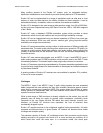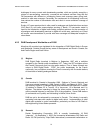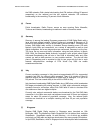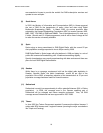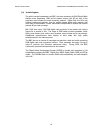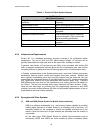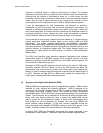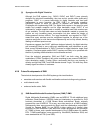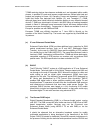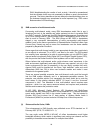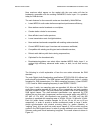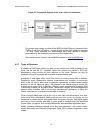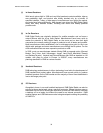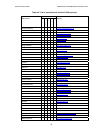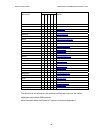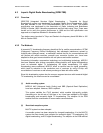DIGITAL RADIO GUIDE TERRESTRIAL TRANSMISSION SYSTEMS - DAB
28
T-DMB receiving devices have become available and are integrated within mobile
phones, in portable PCs and small screen portable devices. Several pilot trials and
projects are ongoing in Korea, UK, Germany, France and elsewhere. It should be
noted that Korea has deployed both Satellite (S-) and Terrestrial (T-) DMB,
although these have limited technical similarities leading to very different terminal
devices. T-DMB was introduced in Korea in mid-2005 using an existing terrestrial
network in Band III (although formal commercial launch has been delayed whilst
business issues are coordinated). Frequencies in L-Band are available in much of
Europe for possible use with DMB and DAB.
European T-DMB was officially launched on 7 June 2006 in Munich on the
occasion of the World Football Cup. The launch was organized by WorldDAB and
its partners.
(a) IP over Enhanced Packet Mode
Enhanced Packet Mode (EPM) provides additional error protection for DAB
packet mode-based services, such as IP and MOT (Multimedia Object
Transfer), by the use of a DAB-FEC frame and the addition of FEC packets
(in a similar way to the DVB-H MPE-FEC). The same Reed-Solomon code is
used as in DMB. Interleaving is different from T-DMB and allows backwards-
compatible reception of EPM services on receivers with conventional DAB
packet mode. The EPM specification has been submitted to ETSI.
(b) DAB-IP
The BT Movio's "DAB-IP" system is a DAB application of IP over Enhanced
Packet Mode. Technical trials in UK by British Telecom started mid-2005 and
ran through to the end of December 2005. Microsoft’s solution for video and
audio coding as well as digital rights management (DRM) have been
selected for this pilot. The electronic programme guide (EPG) designed for
BT Movio and standardized by ETSI proved quite successful. DAB-IP
enables DAB digital radio to share multiplex capacity with mobile TV and
therefore allows TV operators to benefit from the considerable DAB spectrum
and infrastructure investments that have been made across Europe. The
prototype DAB-IP devices were based on a fully functioning 2.5G mobile
phone which included an integrated DMB receiver, so that users could enjoy
broadcast digital TV and radio services using advanced EPG.
(c) The German DXB Project
Digital Extended Broadcasting (DXB) is a German-funded project running
until 2007. The DXB concept will offer similar services to DVB-H over a DAB-
based transmission system. Services may use the IP-protocol over
Enhanced Stream Mode (using MPEG-2 TS as with DMB) or via the
Enhanced Packet Mode.
It should be observed that an alternative broadcast system for mobile
multimedia applications is being developed in the framework of the DVB
Project: DVB-H (H stands for handheld). Some EBU research institutes are in
the process of looking into the technical and operational merits of DVB-H and



